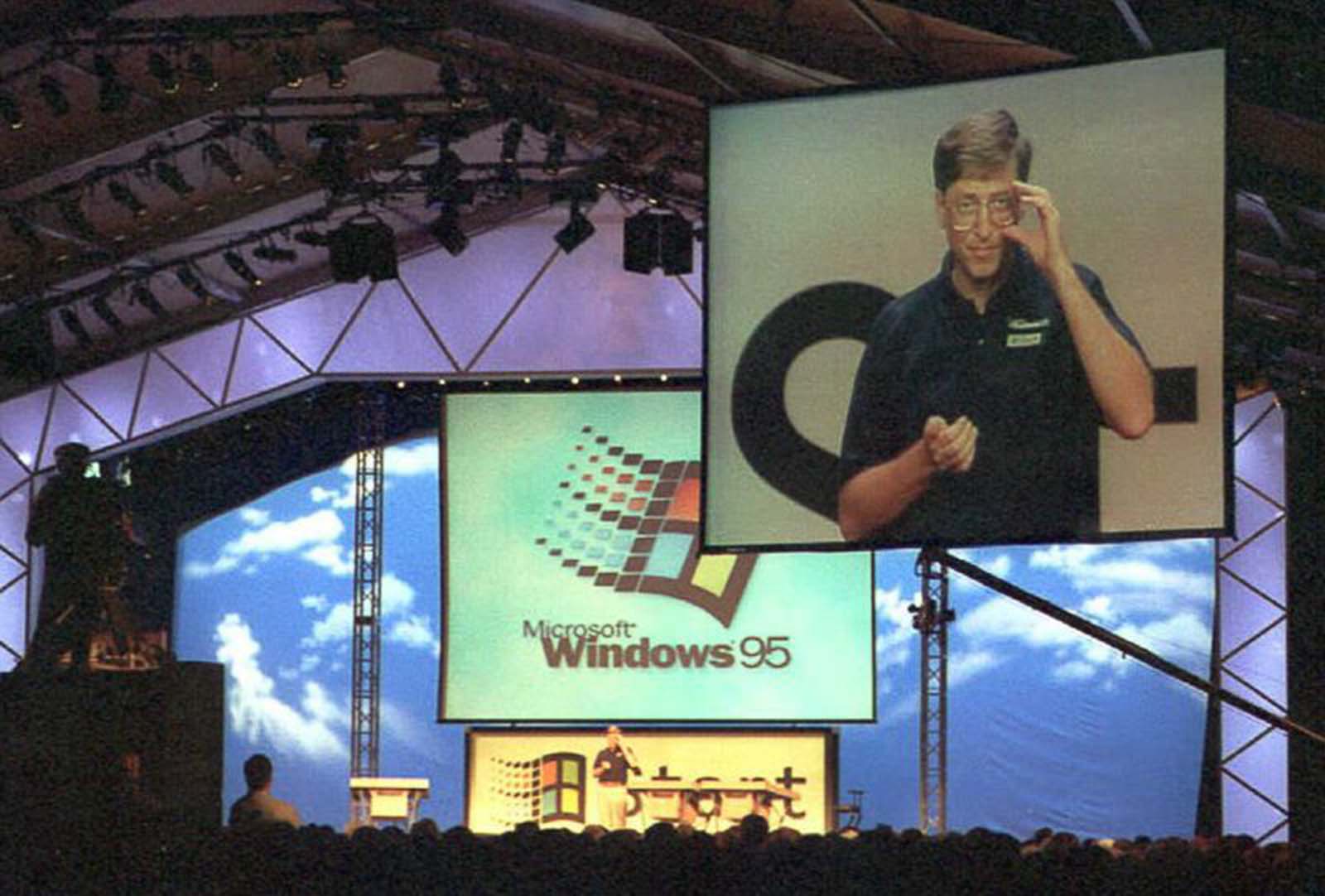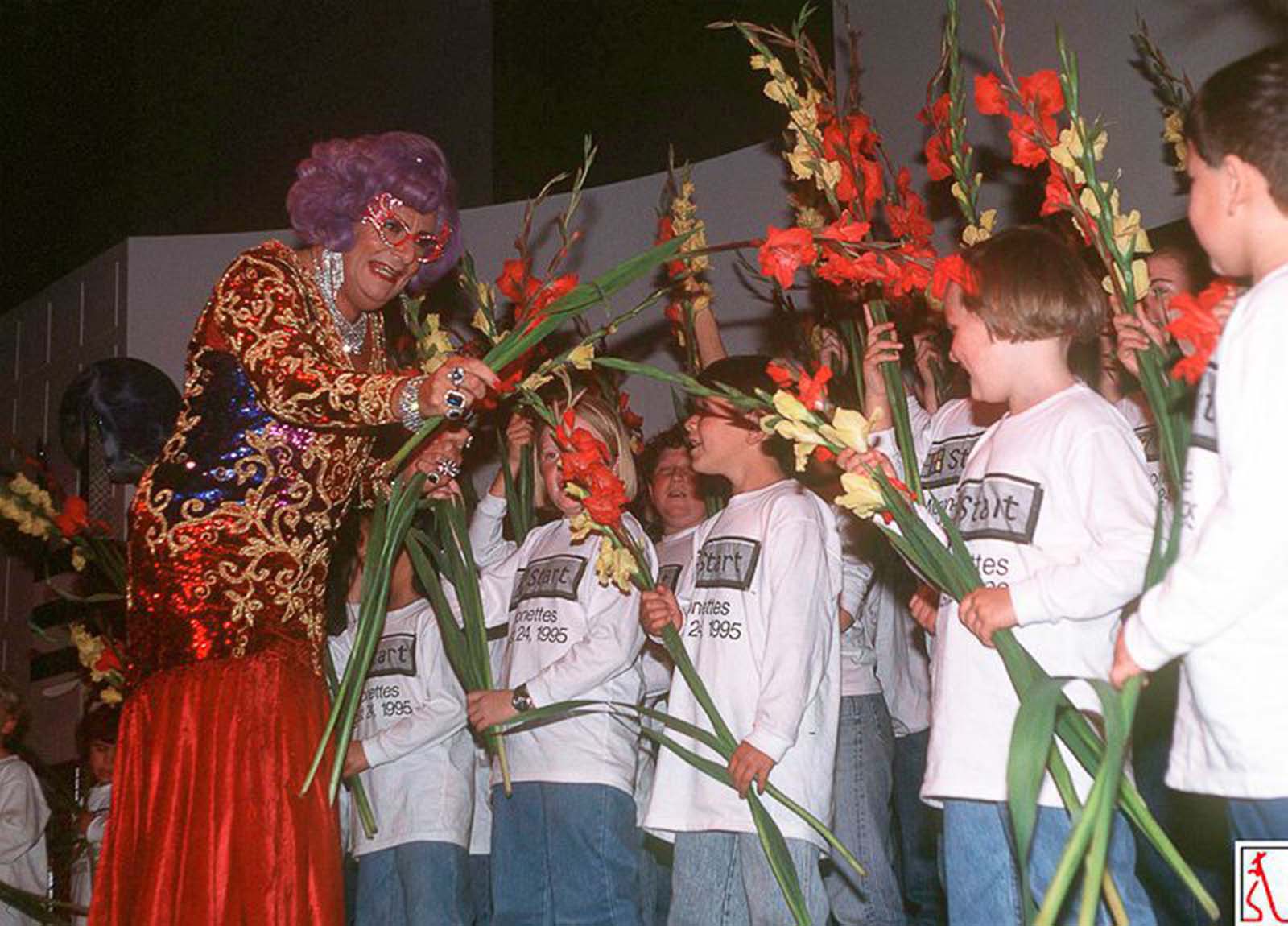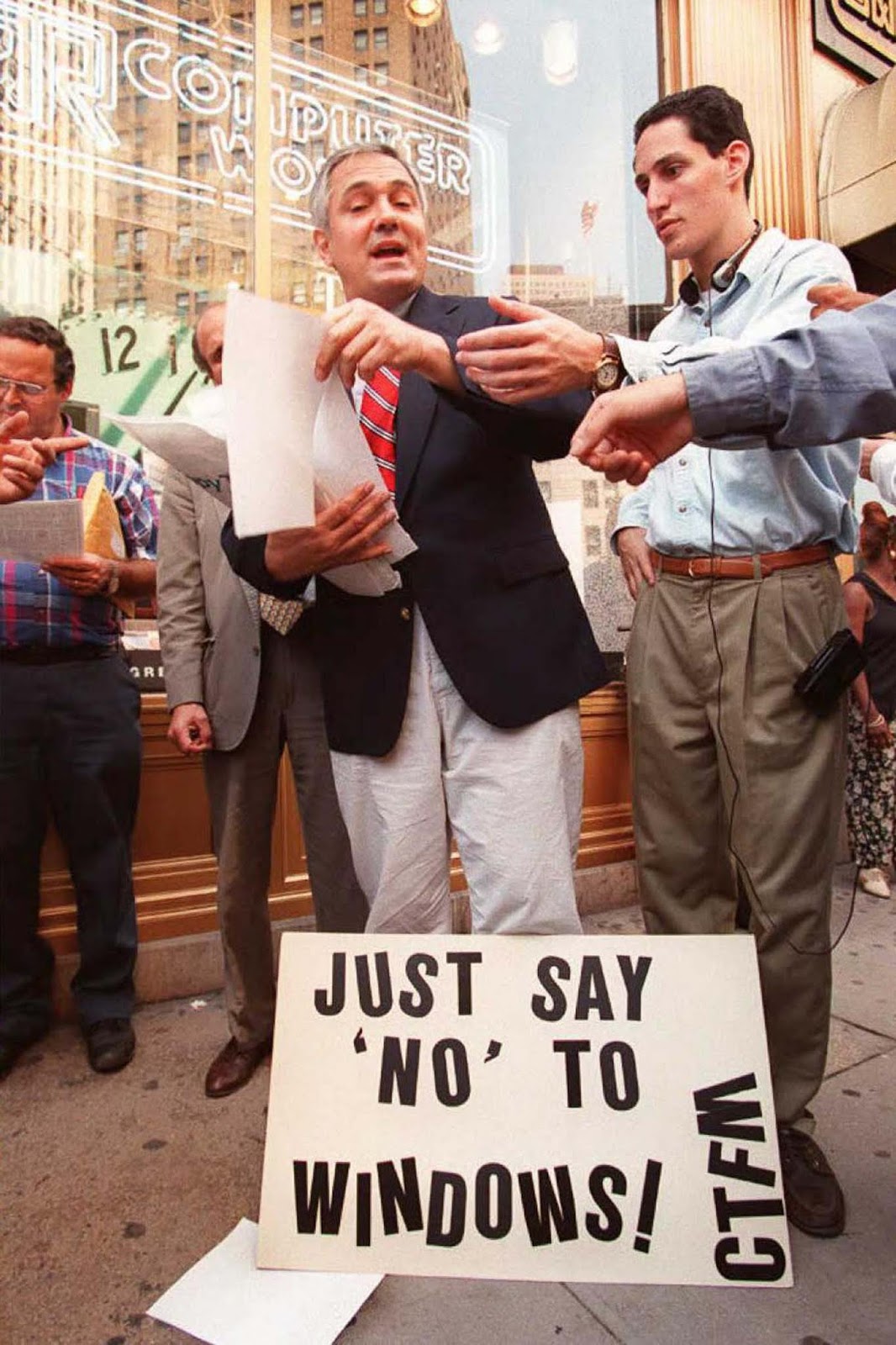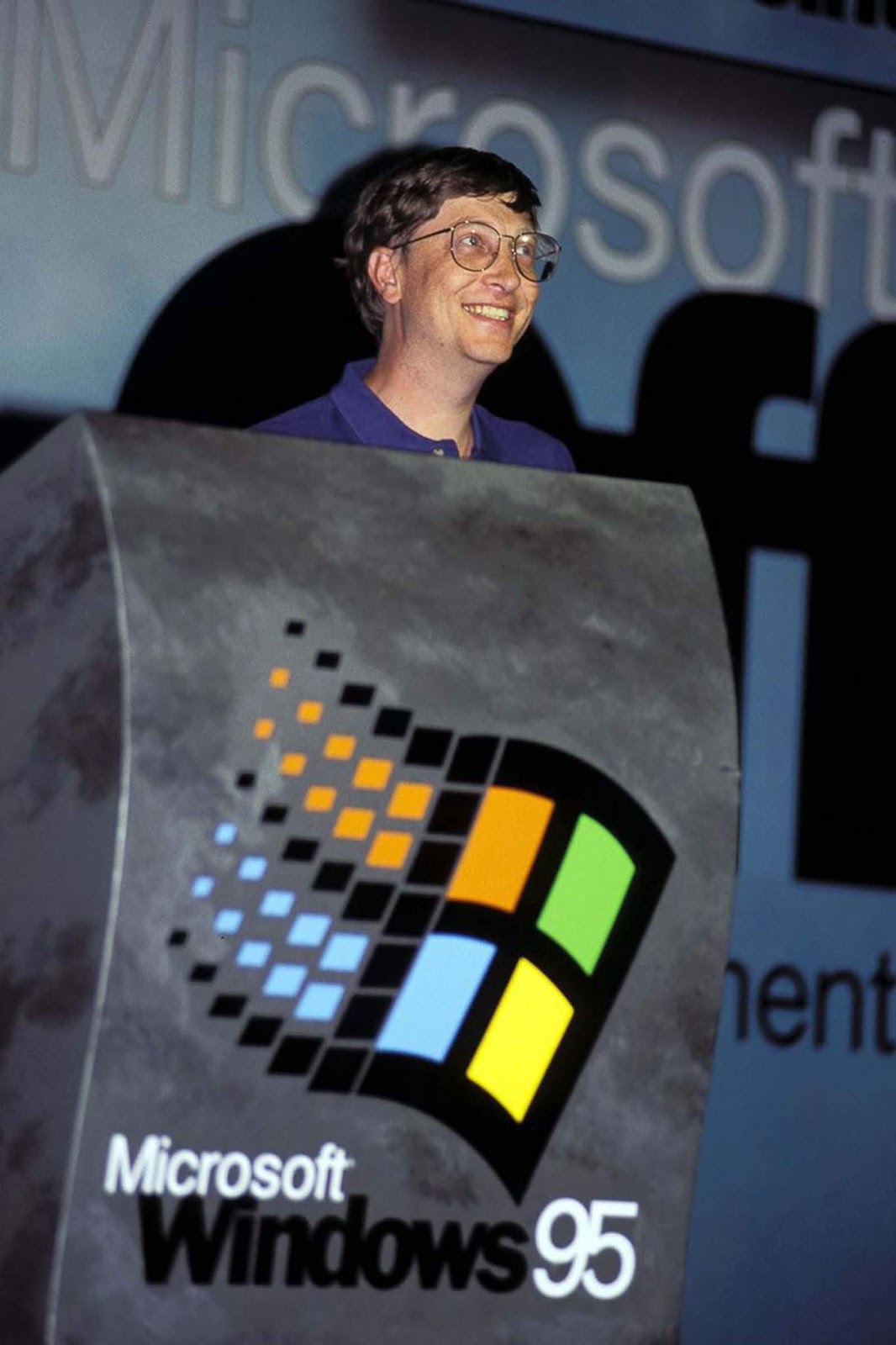Windows 95 had a few notable add-ons, not least being the now-famous Start menu, a feature so significant that the company dedicated its launch ad to it. In addition to the Start button, Windows 95 introduced the taskbar, and added support for filenames up to 250 characters (a thrilling feature at the time) and “Plug and Play” support for installing new hardware. The launch was hyped by a $300 million marketing campaign, including a “cyber sitcom” showing off the new features. Friends stars Jennifer Aniston and Matthew Perry made cameos. In 1995, computers were still mostly for the office and productivity. But Windows 95 brought with it a word that consumers understood: “Start.” Start what? Start anything. There was also built-in, broad support for multimedia, which helped propel an explosion of CD-ROM titles. Gates and Microsoft designed Windows to be as consumer-friendly as possible (for the time) and made sure the launch event had crossover appeal — a first for a tech event. Many electronics stores held midnight launches for the product, with thousands of people waiting in line to be the first to get their hands on the operating system. The release was a tremendous success. Microsoft sold 7 million copies in the first five weeks, and Windows 95 was soon the most popular operating system on the market. The event put not only Windows 95 and operating systems on the map, but it also turned Microsoft into a brand name like General Mills and Ford and shone a bright, international spotlight on the company’s somewhat nerdy and socially awkward CEO. Windows 95 is very likely the first major operating system most people of a certain age remember. (Photo credit: Getty Images). Notify me of new posts by email.
Δ Subscribe










